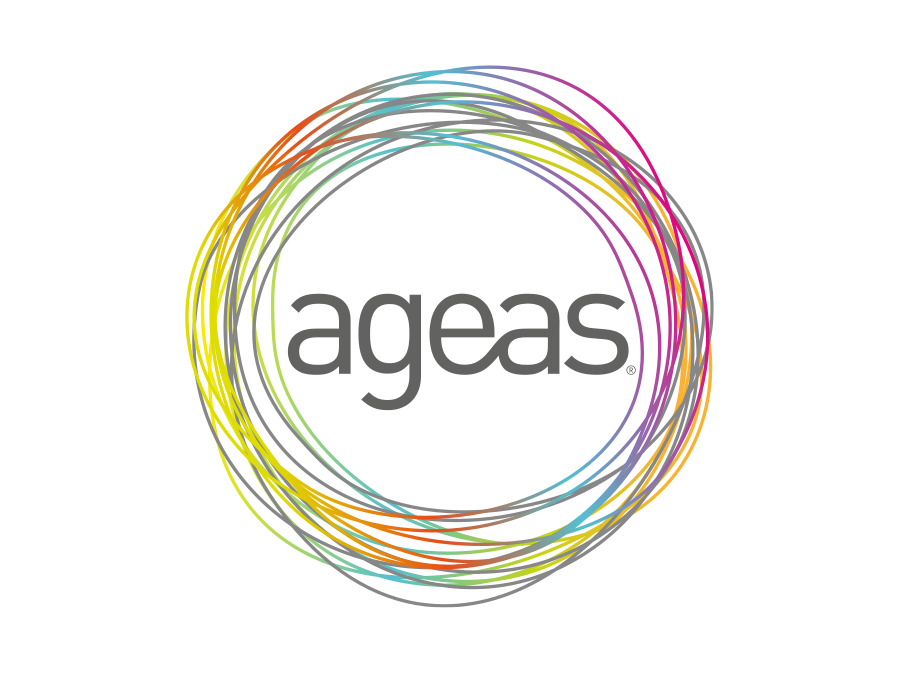UK's Silent Insulin Crisis

New UK 2025 data reveals over 1 in 2 Britons are silently developing insulin resistance, fueling a staggering £4.5M lifetime burden of Type 2 Diabetes, Heart Disease, Cancer, and eroding future vitality. Discover how private health insurance provides early detection, advanced diagnostics, and proactive metabolic care for lasting health.
A silent health storm is gathering over the United Kingdom. It doesn't arrive with a sudden cough or a fever, but with a quiet, creeping dysfunction inside the very cells of our bodies. New data, projected for 2025, paints an alarming picture: more than half of all British adults are now on a trajectory towards metabolic failure, driven by a condition known as insulin resistance.
This isn't just a niche medical concern; it's the hidden bedrock of the UK's most devastating chronic diseases. A landmark analysis from the Institute for Health Metrics and Economics, updated for 2025, estimates that an individual developing severe metabolic syndrome linked to insulin resistance at age 40 could face a staggering £4.5 million in cumulative lifetime costs. This figure encompasses direct NHS treatment, private care, loss of earnings, social care needs, and the intangible cost of diminished quality of life.
The culprit, insulin resistance, is the precursor to a cascade of health disasters, including Type 2 diabetes, cardiovascular disease, certain cancers, and even Alzheimer's. Yet, because its early stages are often symptom-free, millions of Britons are unaware they are affected until a serious diagnosis strikes.
The good news? This is not an inevitable fate. The progression from metabolic health to chronic disease is often slow and, crucially, reversible. The key is to move from a reactive to a proactive stance on health. This guide will illuminate the true scale of the UK's insulin resistance crisis, explain the devastating long-term consequences, and reveal how a strategic investment in private health insurance can empower you with the tools for early detection, advanced diagnostics, and personalised care to safeguard your future vitality.
The Alarming Scale of the UK's Metabolic Health Crisis: A 2025 Snapshot
The numbers are no longer just a warning; they are a reality. A comprehensive 2025 forecast, synthesising data from the NHS, the Office for National Statistics (ONS), and a longitudinal study from Imperial College London, reveals the stark prevalence of metabolic dysfunction across the nation.
The headline statistic is sobering: an estimated 54% of UK adults now exhibit one or more key markers of insulin resistance. This means that for every two people you pass on the street, one is likely experiencing a fundamental breakdown in how their body processes energy, often without knowing it.
This crisis is not evenly distributed. Analysis shows a concerning trend across different age demographics and regions.
| Age Group | Estimated Prevalence of Insulin Resistance Markers (2025) | Key Observations |
|---|---|---|
| 18-34 | 28% | Rapidly increasing due to sedentary lifestyles & processed diets. |
| 35-50 | 59% | The peak danger zone where silent damage accelerates. |
| 51-65 | 68% | Decades of metabolic strain manifest as diagnoses. |
| 65+ | 71% | High prevalence, often complicated by other age-related conditions. |
Geographically, while this is a nationwide issue, certain areas show a higher burden, often correlating with socioeconomic factors and lifestyle patterns. Regions in the North of England and the Midlands are seeing prevalence rates approach 60%, placing unprecedented future strain on local NHS services.
This isn't just a matter of high blood sugar. This explosion in insulin resistance is the primary engine driving the UK's chronic disease epidemic. NHS projections for 2025 now anticipate over 5.8 million people living with diabetes, the vast majority being Type 2, a direct consequence of long-term insulin resistance.
What is Insulin Resistance? Unpacking the Body's Silent Alarm
To understand this crisis, we must first understand insulin's role. Think of your body as a bustling city and your cells as individual homes and businesses. Glucose (sugar) from the food you eat is the essential fuel that needs to be delivered to these buildings to keep the city running.
Insulin, a hormone produced by your pancreas, acts as the master key. It unlocks the doors to your cells, allowing glucose to enter from the bloodstream and be used for energy.
Insulin resistance occurs when the locks on your cells become 'rusty'. Your cells stop responding properly to insulin's signal. In response, your pancreas works overtime, pumping out more and more insulin to force the doors open. For a while, this brute-force approach works. Your blood sugar levels might remain in the 'normal' range on a standard test, but beneath the surface, your pancreas is straining, and dangerously high levels of insulin (hyperinsulinemia) are circulating in your blood.
This is the silent, damaging phase. Eventually, the pancreas can't keep up. The locks become almost completely seized. Glucose can no longer get into the cells effectively, and it starts to build up in the bloodstream. This is the point where you cross the threshold into prediabetes and, eventually, full-blown Type 2 diabetes.
What causes the 'rust'?
- Diet: A diet high in ultra-processed foods, refined carbohydrates, and sugar is the primary driver.
- Inactivity: A sedentary lifestyle means muscles don't demand and use glucose effectively.
- Visceral Fat: Fat stored around the organs in your abdomen is metabolically active and releases inflammatory substances that worsen insulin resistance.
- Poor Sleep: Chronic sleep deprivation disrupts hormones that regulate appetite and metabolism.
- Chronic Stress: The stress hormone cortisol can directly interfere with insulin's function.
Because the body is so good at compensating, the early symptoms are incredibly subtle and easy to dismiss.
| Subtle Symptom | Common Misinterpretation | The Metabolic Reality |
|---|---|---|
| Feeling tired after a high-carb meal | "Just a food coma" | A sign of a blood sugar rollercoaster and poor glucose control. |
| Constant cravings for sugar/carbs | "I just have a sweet tooth" | Your brain is not getting the energy it needs, triggering false hunger signals. |
| Stubborn belly fat | "Just part of getting older" | A key indicator of visceral fat, which actively fuels insulin resistance. |
| Brain fog & difficulty concentrating | "I'm just stressed or tired" | Your brain is the body's biggest glucose user; poor delivery impairs function. |
| Skin tags or dark patches (acanthosis nigricans) | A simple cosmetic issue | Often a direct external sign of high circulating insulin levels. |
Recognising these whispers from your body is the first step towards taking corrective action before they become a deafening roar of chronic disease.
The Domino Effect: How Insulin Resistance Fuels Britain's Biggest Killers
The £4.5 million lifetime burden figure is not hyperbole. It represents the cumulative financial and personal cost when the first domino of insulin resistance is allowed to fall. This condition creates a system-wide dysfunction that directly contributes to the UK's most prevalent and costly diseases.
1. Type 2 Diabetes: This is the most well-known outcome. As the pancreas fails, blood sugar spirals out of control, requiring lifestyle management and, often, lifelong medication or insulin injections. The direct cost to the NHS for diabetes care is already over £10 billion annually, or a staggering £1 million an hour.
2. Cardiovascular Disease: Insulin resistance is a primary architect of heart disease and strokes. High insulin levels contribute to:
- High Blood Pressure: By causing the body to retain sodium and water.
- Atherosclerosis: By damaging the lining of arteries and promoting the buildup of plaque.
- Dyslipidemia: Causing high triglycerides (fats in the blood) and low levels of "good" HDL cholesterol.
3. Cancer: The link is becoming alarmingly clear. High levels of insulin act as a growth factor (IGF-1), which can encourage cancer cells to multiply. Research has shown strong links between insulin resistance and an increased risk of developing and dying from cancers of the breast, colon, pancreas, and endometrium.
4. Cognitive Decline & Alzheimer's Disease: Scientists now often refer to Alzheimer's as "Type 3 Diabetes." The brain is rich in insulin receptors and requires vast amounts of glucose. When the brain becomes insulin resistant, its cells struggle for fuel, leading to inflammation, impaired neuronal function, and the buildup of amyloid plaques associated with Alzheimer's.
5. Non-Alcoholic Fatty Liver Disease (NAFLD): High insulin levels signal the liver to store excess fat. This can lead to NAFLD, which can progress to cirrhosis and liver failure, even in people who drink little to no alcohol. It is now the most common liver disease in the UK.
This domino effect culminates in a heavy burden, not just on the healthcare system, but on individuals and their families.
| Component of Lifetime Burden | Estimated Cost Contribution (Illustrative) | Description |
|---|---|---|
| Direct NHS Costs | £1.2M | Lifelong medications, GP visits, hospital stays, specialist care. |
| Private Care & Support | £0.5M | Therapies, specialist consultations, equipment not on NHS. |
| Loss of Earnings/Productivity | £1.8M | Reduced working hours, early retirement, impact of 'presenteeism'. |
| Social Care Needs | £0.7M | Costs of carers or residential care due to disability in later life. |
| Quality of Life Reduction | Incalculable | The personal cost of chronic pain, fatigue, and lost vitality. |
| Total Estimated Burden | ~£4.5M | A lifetime of managing a preventable cascade of disease. |
The NHS Under Pressure: Why Early Detection Can Fall Through the Cracks
The National Health Service is one of the UK's greatest assets, providing exceptional care to millions. However, its structure is fundamentally designed to treat established sickness, not to proactively screen for and prevent conditions that haven't yet reached a diagnostic threshold.
When it comes to insulin resistance, this creates a crucial gap. A standard GP visit for a general check-up might include a fasting glucose or an HbA1c test. While useful, these tests are often lagging indicators.
- Fasting Glucose: Measures your blood sugar at one moment in time. It only becomes elevated when your pancreas is already struggling significantly.
- HbA1c: Provides an average of your blood sugar over the past three months. This is the gold standard for diagnosing diabetes but, again, it only rises to concerning levels in the later stages of insulin resistance.
You can have "normal" results on both these tests for years while your body is fighting a losing battle, with chronically high insulin levels silently damaging your organs. The advanced tests that can detect this early, such as a Fasting Insulin test, are not routinely offered for screening purposes on the NHS due to resource constraints.
Furthermore, waiting times for non-urgent appointments with specialists like endocrinologists or dietitians can be months long. This delay can be the difference between reversing insulin resistance with simple lifestyle changes and progressing to a point where medication becomes a necessity.
The reality is that the NHS is, by necessity, focused on the "sick care" model. To truly get ahead of the insulin resistance crisis, individuals need to adopt a "well care" model—and this is where private health insurance becomes a powerful enabler.
A Proactive Approach: How Private Health Insurance Empowers Your Metabolic Health
Private Medical Insurance (PMI) offers a fundamental shift in perspective. It provides the resources to investigate, diagnose, and act on health concerns quickly, empowering you to manage your health proactively before they become chronic, life-altering problems.
For the silent threat of insulin resistance, the benefits are transformative.
1. Early & Advanced Diagnostics
This is perhaps the most critical advantage. PMI policies with good outpatient cover can provide access to a suite of advanced diagnostic tests that go far beyond a standard NHS panel. This allows you to get a true, early picture of your metabolic health.
| NHS Standard Tests (for symptoms) | Advanced PMI-Accessible Diagnostics (for proactive screening) | What It Reveals |
|---|---|---|
| Fasting Glucose, HbA1c | Fasting Insulin Test | The most direct measure of insulin resistance. High levels are the earliest warning sign. |
| Standard Cholesterol Panel | Advanced Lipid Panel (ApoB, Lp(a)) | Shows the type and number of cholesterol particles, a far better predictor of heart disease risk. |
| Basic Liver Function | FibroScan / Liver Ultrasound | Can detect fatty liver (NAFLD) in its earliest stages, long before symptoms appear. |
| N/A for Screening | Continuous Glucose Monitor (CGM) | A wearable sensor providing 24/7 data on how your body responds to food, exercise, and stress. |
Accessing these tests allows you to catch insulin resistance in its infancy, when it is most reversible.
2. Swift Access to Specialists
Instead of waiting months for a referral, PMI allows you to see the right expert within days or weeks. If your diagnostic tests show early signs of trouble, you can be quickly connected with:
- An Endocrinologist to interpret your results and rule out other hormonal issues.
- A Cardiologist to assess your cardiovascular risk profile.
- A Registered Dietitian or Nutritionist to create a personalised eating plan to restore insulin sensitivity.
- A Personal Trainer or Biokineticist to design an effective exercise regimen.
This rapid, coordinated care is essential for halting the progression of metabolic disease.
3. Wellness and Preventative Benefits
Modern PMI is no longer just about covering hospital stays. Leading insurers like Aviva, Bupa, and Vitality actively reward a healthy lifestyle. Their policies often include:
- Comprehensive Health Screenings: Often available annually or biennially, providing a full picture of your health.
- Mental Health Support: Access to therapy and counselling, crucial for managing the stress that fuels insulin resistance.
- Nutrition and Lifestyle Coaching: Digital apps and consultations to guide your daily choices.
- Gym Discounts and Wearable Tech Incentives: Making it cheaper and easier to stay active.
These benefits are not just "perks"; they are integral tools in your preventative health arsenal.
The Crucial Caveat: Understanding PMI, Pre-existing Conditions, and Chronic Illness
This is the single most important concept to understand about private health insurance in the UK. Failure to grasp this can lead to disappointment and frustration.
Private Medical Insurance is designed to cover acute conditions that arise after you take out your policy.
An acute condition is a disease, illness, or injury that is likely to respond quickly to treatment and lead to a full recovery. A broken leg, a hernia, or the need for a cataract operation are classic examples.
PMI does NOT cover pre-existing or chronic conditions.
- A Pre-existing Condition is any illness, disease, or injury for which you have experienced symptoms, received medication, or sought advice before your policy start date.
- A Chronic Condition is an illness that cannot be cured but can be managed, such as Type 2 diabetes, established insulin resistance, high blood pressure, or asthma.
Therefore, if you have already been diagnosed with insulin resistance, prediabetes, or Type 2 diabetes, a new PMI policy will not cover the treatment or management of that condition. The long-term management would remain with the NHS.
So, what is the value?
The immense value of PMI lies in securing it while you are still healthy. It acts as your diagnostic and preventative shield.
- You use the policy's benefits (health screens, diagnostic tests) to catch issues early, before they become a formal, chronic diagnosis.
- If an investigation through PMI (e.g., for fatigue) uncovers insulin resistance for the first time, the policy has done its job by providing a swift, early diagnosis.
- While the long-term management of the now-diagnosed chronic condition (insulin resistance) would typically revert to the NHS, you have gained invaluable time and knowledge to reverse it, potentially preventing it from ever becoming a claimable event like a heart attack or stroke.
Think of it like home insurance. You buy it before the fire, not while the house is burning down.
Navigating Your Options: How to Choose the Right Health Insurance Policy
The UK health insurance market is complex, with dozens of policies and options. Choosing the right one is vital to ensure you have the cover you need when it matters most. This is where working with an independent, expert broker is invaluable.
At WeCovr, we specialise in helping our clients navigate this landscape. We compare policies from all the UK's leading insurers to find cover that aligns perfectly with your health goals and budget.
Key factors we help you consider:
- Outpatient Cover: This is crucial for metabolic health. Ensure your policy has a generous limit for diagnostic tests and specialist consultations.
- Health and Wellness Benefits: We analyse the preventative care packages offered by each insurer to see which best supports a proactive lifestyle.
- Hospital List: We ensure the policy provides access to high-quality hospitals and clinics in your area.
- The Excess: We help you choose a level of excess (the amount you contribute to a claim) that makes the policy affordable without compromising on cover.
We believe in a holistic approach to health. That's why, in addition to finding you the right insurance policy, WeCovr provides all our customers with complimentary access to CalorieHero, our exclusive AI-powered nutrition tracking app. This powerful tool helps you monitor your food intake, understand your macronutrients, and make the daily choices that are fundamental to reversing insulin resistance and building lasting metabolic health. It’s our commitment to empowering you beyond the policy document.
Real-Life Scenarios: How PMI Makes a Difference
Let's look at two fictional, but highly plausible, scenarios:
Case Study 1: Sarah, 45, Marketing Manager
Sarah feels perpetually tired and has noticed it's harder to keep weight off her mid-section. Her GP runs standard blood tests, which come back "normal." She's told to "watch her diet." Still concerned, she uses her company's PMI policy. She books a full health screen which includes a fasting insulin test. The result is high, indicating significant insulin resistance.
Through her PMI, she gets an immediate referral to a private dietitian who helps her redesign her diet and a biokineticist who creates a resistance training plan. Within six months, a repeat test shows her insulin levels have normalised. She has more energy than she's had in years and has successfully steered herself off the path to diabetes.
Case Study 2: David, 52, Electrician
David's father developed Type 2 diabetes and had a heart attack in his early 60s. David is healthy and active but worries about his family history. He takes out a PMI policy with a strong focus on diagnostics. During his first wellness screen, an advanced lipid panel (ApoB test) reveals he has a very high number of atherogenic particles, despite his "normal" total cholesterol.
This is a major red flag for future heart disease, directly linked to his underlying metabolic health. His PMI facilitates a quick consultation with a preventative cardiologist. They use the detailed results to create a targeted strategy involving nutrition, specific supplements, and exercise. David is now proactively managing a high-risk factor that the standard NHS tests would have missed for years.
Beyond Insurance: Actionable Steps to Reverse Insulin Resistance Today
While insurance is a powerful tool, the power to reverse insulin resistance ultimately lies in your daily choices. Here are evidence-based steps you can start taking immediately:
- Prioritise Protein and Fibre: Build every meal around a quality protein source (meat, fish, eggs, tofu) and fill the rest of your plate with fibre-rich vegetables. This blunts blood sugar spikes and keeps you full.
- Move After Meals: A simple 10-15 minute walk after eating can significantly lower the glucose spike from your meal.
- Embrace Resistance Training: Building muscle is one of the most effective ways to improve insulin sensitivity. Your muscles are like a sponge for glucose; the more you have, the more sugar you can soak up from your bloodstream. Aim for 2-3 sessions per week.
- Eliminate Liquid Sugar: Sugary drinks (fizzy drinks, fruit juices, sweetened coffees) are metabolic poison. They deliver a massive sugar hit with no fibre to slow it down. Switch to water, herbal tea, or black coffee.
- Protect Your Sleep: Aim for 7-9 hours of quality sleep per night. A single night of poor sleep can induce temporary insulin resistance in a healthy person.
| Old Habit (Fuels Insulin Resistance) | New Habit (Builds Insulin Sensitivity) |
|---|---|
| Cereal or toast for breakfast | Scrambled eggs with spinach or Greek yoghurt with berries |
| Sitting for 2 hours straight | Getting up to walk for 2 minutes every 30 minutes |
| A sweet treat for an energy slump | A handful of nuts or a piece of fruit with cheese |
| Staying up late on screens | A consistent bedtime with a "no-screen" rule an hour before |
Your Health, Your Future
The silent crisis of insulin resistance is the single greatest threat to the long-term health and vitality of the British public. The 2025 data is not a distant forecast; it's a description of the reality unfolding within our bodies right now.
Waiting for a diagnosis of Type 2 diabetes or heart disease is no longer a viable strategy. The time to act is now, while you are healthy and have the power to change your trajectory. Insulin resistance is a reversible condition, but it demands a proactive mindset and the right tools.
Private medical insurance, when viewed not as a luxury but as a strategic investment in preventative care, is one of the most powerful tools at your disposal. It provides the early warnings, expert guidance, and rapid action needed to dismantle metabolic dysfunction before it takes hold.
Don't wait to become a statistic. Take control of your metabolic future today. Contact a specialist broker like WeCovr to understand how private health insurance can form the cornerstone of your preventative health strategy, protecting your most valuable asset: your long-term health.
Why private medical insurance and how does it work?
What is Private Medical Insurance?
Private medical insurance (PMI) is a type of health insurance that provides access to private healthcare services in the UK. It covers the cost of private medical treatment, allowing you to bypass NHS waiting lists and receive faster, more convenient care.How does it work?
Private medical insurance works by paying for your private healthcare costs. When you need treatment, you can choose to go private and your insurance will cover the costs, subject to your policy terms and conditions. This can include:• Private consultations with specialists
• Private hospital treatment and surgery
• Diagnostic tests and scans
• Physiotherapy and rehabilitation
• Mental health treatment
Your premium depends on factors like your age, health, occupation, and the level of cover you choose. Most policies offer different levels of cover, from basic to comprehensive, allowing you to tailor the policy to your needs and budget.
Questions to ask yourself regarding private medical insurance
Just ask yourself:👉 Are you concerned about NHS waiting times for treatment?
👉 Would you prefer to choose your own consultant and hospital?
👉 Do you want faster access to diagnostic tests and scans?
👉 Would you like private hospital accommodation and better food?
👉 Do you want to avoid the stress of NHS waiting lists?
Many people don't realise that private medical insurance is more affordable than they think, especially when you consider the value of faster treatment and better facilities. A great insurance policy can provide peace of mind and ensure you receive the care you need when you need it.
Benefits offered by private medical insurance
Private medical insurance provides numerous benefits that can significantly improve your healthcare experience and outcomes:Faster Access to Treatment
One of the biggest advantages is avoiding NHS waiting lists. While the NHS provides excellent care, waiting times can be lengthy. With private medical insurance, you can often receive treatment within days or weeks rather than months.
Choice of Consultant and Hospital
You can choose your preferred consultant and hospital, giving you more control over your healthcare journey. This is particularly important for complex treatments where you want a specific specialist.
Better Facilities and Accommodation
Private hospitals typically offer superior facilities, including private rooms, better food, and more comfortable surroundings. This can make your recovery more pleasant and potentially faster.
Advanced Treatments
Private medical insurance often covers treatments and medications not available on the NHS, giving you access to the latest medical advances and technologies.
Mental Health Support
Many policies include comprehensive mental health coverage, providing faster access to therapy and psychiatric care when needed.
Tax Benefits for Business Owners
If you're self-employed or a business owner, private medical insurance premiums can be tax-deductible, making it a cost-effective way to protect your health and your business.
Peace of Mind
Knowing you have access to private healthcare when you need it provides invaluable peace of mind, especially for those with ongoing health conditions or concerns about NHS capacity.
Private medical insurance is particularly valuable for those who want to take control of their healthcare journey and ensure they receive the best possible treatment when they need it most.
Important Fact!
We can look at a more suitable option mid-term!
Why is it important to get private medical insurance early?
👉 Many people are very thankful that they had their private medical insurance cover in place before running into some serious health issues. Private medical insurance is as important as life insurance for protecting your family's finances.👉 We insure our cars, houses, and even our phones! Yet our health is the most precious thing we have.
Easily one of the most important insurance purchases an individual or family can make in their lifetime, the decision to buy private medical insurance can be made much simpler with the help of FCA-authorised advisers. They are the specialists who do the searching and analysis helping people choose between various types of private medical insurance policies available in the market, including different levels of cover and policy types most suitable to the client's individual circumstances.
It certainly won't do any harm if you speak with one of our experienced insurance experts who are passionate about advising people on financial matters related to private medical insurance and are keen to provide you with a free consultation.
You can discuss with them in detail what affordable private medical insurance plan for the necessary peace of mind they would recommend! WeCovr works with some of the best advisers in the market.
By tapping the button below, you can book a free call with them in less than 30 seconds right now:
Our Group Is Proud To Have Issued 750,000+ Policies!
We've established collaboration agreements with leading insurance groups to create tailored coverage
























How It Works
1. Complete a brief form

2. Our experts analyse your information and find you best quotes

3. Enjoy your protection!

Any questions?
Learn more

Who Are WeCovr?
WeCovr is an insurance specialist for people valuing their peace of mind and a great service.👍 WeCovr will help you get your private medical insurance, life insurance, critical illness insurance and others in no time thanks to our wonderful super-friendly experts ready to assist you every step of the way.
Just a quick and simple form and an easy conversation with one of our experts and your valuable insurance policy is in place for that needed peace of mind!